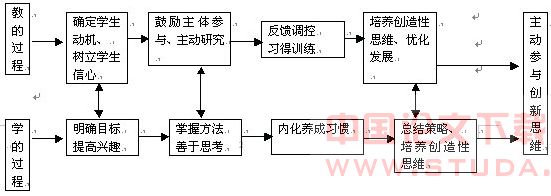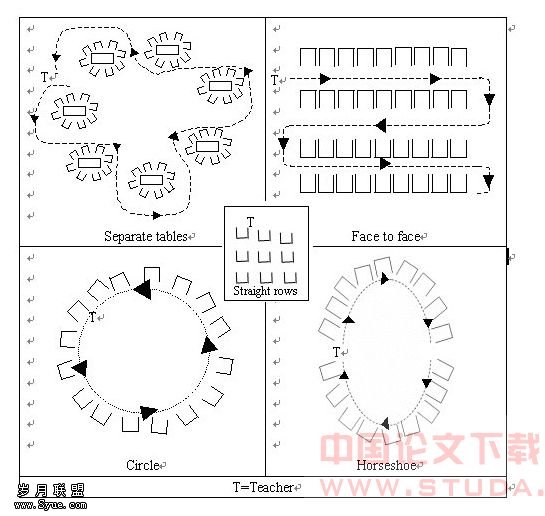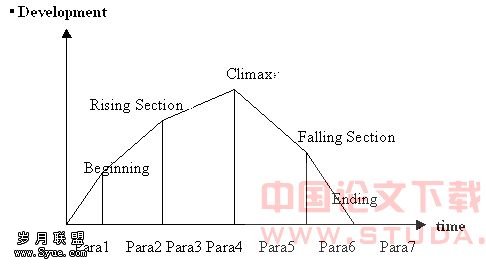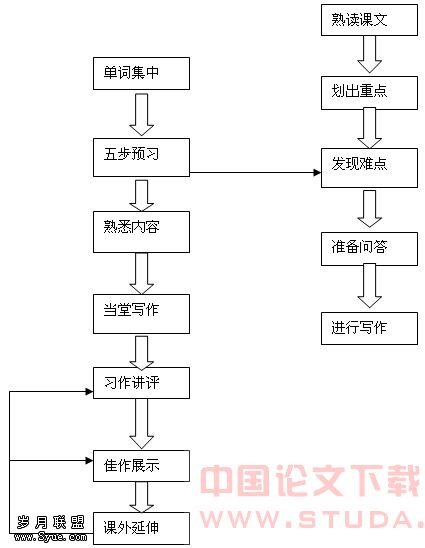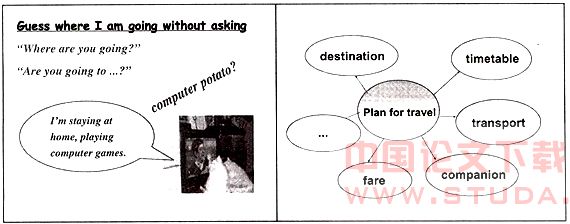浅谈教师的课堂表现对学习者学业成就的影响
[Abstract] Affective factors play a significant role in foreign language teaching and learning. The paper advocates that all foreign language teachers should improve the traditional teaching approaches by affiliating the affective factor with them. This paper also attempts to illustrate the idea of affective teaching, which is totally different from the traditional teaching approach. What foreign language teachers have done in the classroom does affect foreign language learners’ affect, and therefore influence the latter’s school achievement. In chapter 2, this paper simply introduces body language in classroom teaching, while put much more emphasis on one of which----eye contact between teachers and students. The influence of using eye contact on English teaching and learning effect is clearly displayed through many aspects, such as physiological structure of eye, and psychology and functions of eyes contact,. At the end of this thesis, a set of self-made questionnaires are adopted to investigate middle school students and teachers’ opinions about the practical use of eye contact in language teaching classroom. And the results of the investigation are displayed to support the topic of this paper.
[Key Words] affective teaching; body language; eye-contact
【摘 要】 情感因素在外语教学上意义重大。本文介绍了教学者对情感意义的阐述与说明,并且倡导所有外语教学工作者必须在传统的教学方法上加强对情感因素的认识与运用。其次,本文阐述了情感教学的新理念,通过分析教师的课堂表现,以及教师与学生之间的情感联系对课堂教学和学生学业成就造成的影响,从而引出课堂教学中运用到的身势语言,并且重点说明眼神交流的重要性。
在文章的最后,笔者采用问卷调查的方式,调查了广大师生对课堂教学中眼神交流的种种运用及其效果的评价。从调查结果来看,课堂中的眼神交流对师生之间建立情感交流,对学生的学业成就都具有很大的影响。从而用数据说明了,教师必须重视施教过程中的各种非语言交际行为,尤其是眼神交流的运用,以达到最佳教学效果。
【关键词】情感教学;肢体语言;目光交流
1. Introduction
Drink to me only with thine eyes,
And I will pledge with mine. . . .
1.1 Teacher’s Role
As English has become an important language in the world communication, more and more people join the learners group. And a lot of measures are taken to improve the environment of teaching in the hope of getting the best teaching effect.
But as we know, a foreign language usually requires more formal instruction and other measures compensating for the lack of environmental support. Most of this must be done by the means of classroom teaching. And therefore, what foreign language teachers do in the process of teaching has a decisive influence on the learners learning proficiency. In other words, second language learning depends greatly on teachers. So it is necessary for us to do research into what kind of foreign language teachers’ in-class performance can enhance learning proficiency most.
1.2 Overview of the Problem
Traditional English teaching methodology is teacher-centered. In the traditional classroom, the picture is that teachers spend most of the time feeding to learners all relevant knowledge they think important, regardless whether they can digest or not, while learners get little chance to practice target language. They are used to their roles as machines keeping busy recording all the information provided, completely forgetting to comprehend what the information really means.
Those educators, fore-passed and nowadays, abroad and at home, lay too much emphasis on the brain’s functions of sense and cognition while neglecting its emotional development, which results in “emotional illiteracy” [1]. Such kind of tendency exerts great influence on language teaching by attaching too much importance to the cognitive side of language learning while overlooking the functions of affective factors.
2. Affect Teaching
2.1 The Definition of Affect
What does the word “affect” mean? There are definitions from various resources.
l (Psychology). 1. A feeling or emotion as distinguished from cognition, thought, or action. [2]
l Affect refers to emotion and feelings, the affective domain is the emotional side of human behavior.[3]
l The external expression of emotion attached to ideas or mental representations of objects; cf. mood. [4]
l The outward manifestation of a person’s feelings, tone or mood. Affect and emotions are commonly used interchangeable.[5]
Actually, the terms affect, emotions and moods or feelings can be used interchangeably, although we are aware that distinction can be drawn between them.
Affect is perhaps more general, and may be used to refer to both emotions and moods.
2.2 The Categories of Affect
Here affect can be divided into three kinds: the affect of learners themselves, the affect among learners, and the affect between learners and teachers. The first one includes many aspects, such as “anxiety, inhibition, self-esteem, motivation” [6] and so on. And the latter two are mainly embodied in classroom transactions.
2.3 The Importance of Affect
The role and mechanism of affect in teaching process show that optimizing learners’ affect has an important, practical meaning for real teaching.
Usually, as we know, the affective factors between teachers and students can be regarded as a kind of extrinsic motivation, which is the crucial force that determines whether a learner embarks on a task at all, how much energy he devotes to it, and how long he perseveres. In the same class, students with positive affect had higher learning proficiency. “In the teaching context, learners’ affect is the reflection of the relationship between teachers and teaching activities and learners’ real needs. Whether teachers and teaching activities meet learners’ demands is the main factor that influences the development of learners’ affect” [7] . In addition, any effective way to stimulate learners’ affect also depends on teachers.
Here I should follow Arnold in saying that one’s ‘affect’ toward a particular thing or action or situation or experience is how that thing or that action or that situation or that experience fits in with one’s needs or purpose, and its resulting effect on one’s emotions. [8]
2.4 What is Affective Teaching
Affective teaching is a kind of teaching approach, in which teachers focus on valuing student attitudes, feelings and beliefs in the teaching process, and make good use of the positive factors of affect to encourage students to discuss their personal interests and experiences. “Affective teaching is somewhat a positive way to consummate teaching goals, to improve teaching methods and to consolidate teaching effects. The most important characteristic of this teaching approach is that it provides learners a good opportunity to develop their affect as well as cognition, which can be called an all-round education.” [9]
It is totally contrasted to the traditional teaching method ‘cognitive teaching’, which focuses on providing information and explaining concepts.
3. Body Language
3.1 The Relationship between Using Body Language and Affective Teaching
As we have mentioned in last chapter, affective factors have a great influence on the classroom teaching. In order to make full use of those positive factors, teachers have to establish a harmonious, affective relationship with students, thus both of them will enjoy the teaching process in classroom.
How can we create a harmonious teaching environment? To a great extent, it depends on the foreign language teachers’ behavior, that is, what and how foreign language teachers do. For one thing, foreign language teachers should give learners a sense of belonging and a positive environment. For the other thing, it is teacher’s responsibility to instruct students carefully, so that they can catch up with the teaching steps.
Using body language properly is a good way. Body language is an important media through which people communicate with each other. It refers to the patterns of facial expressions and gestures that people use to express their feelings in communication. The specialist on body language research, Fen·Lafle·Angles, once said: “Once it was lost, a body couldn’t have grown into a normal person”. [10]
3.2. The Necessity of Using Body Language in English Teaching
Classroom teaching is one of the most important ways of learning English. The teacher has to arouse the students’ learning interest and achieve the best teaching result in 45 minutes. To create a better English environment, the teacher will use English most of the time. But, as a matter of fact, the students are not so good at English and their vocabulary and expressive ability are limited, too. According to the students’ present level and practical situation, the teachers have to simplify their teaching language with the help of facial expressions and body movements so as to smoothen the communication between the teacher and the students. Body language is much needed.
In school education, body language helps to cultivate the students’ characters. For, teachers are usually respected, and teachers’ behaviors will be possibly imitated by the students (sometimes subconsciously). That is to say, teachers’ graceful body language plays a positive role in improving the students’ artistic-appreciation and moral character, which will possibly lead them to form an optimistic personality and have a more smooth interpersonal relation.
The affection of teachers’ body language is reflected not only by establishing a good example, but also by strengthening the teacher-student relationship, on the foundation of which a more harmonious studying atmosphere is created. In fact, teachers’ friendly appearance can greatly encourage the students’ studying enthusiasm.
Furthermore, the characteristics of that theoretic and abstract knowledge also require a vivid, dramatic and accessible way to make it more specific and figurative. As a result, the students’ interest is motivated and the effect of teaching is greatly improved.
4. A Part of Body Language---- Eye Contact
There are many kinds of body language, among which eye contact is most important because it is not only time and effort saving, but also a secret communicative tool between teachers and learners.
Eye contact is an important part of communication, yet teachers often forget about or underestimate the use of eye contact in their own and their students' performance.
4.1The Reason of Using Eye Contact in Classroom Teaching
There are many reasons why teachers should make full use of eye contact in the process of language teaching:
First, the teacher should regulate the classroom discipline. Some of them often complain about classroom discipline, lack of attention, and many other problems, yet they seldom use eye contact or gesture to stop the discipline problems. Imagine that you are in the midst of helping a struggling student who has almost "got it". At the same time, out of the corner of your eye, you catch someone absent minded. You look up to see one student poking another as they both giggle. This is your time to act. Send nonverbal cues immediately (making eye contact, moving to that direction, pointing toward his or her work) to the offender. If you fail to commit to the problem as soon as you see it, then all your classroom rules are nothing but hot air.
Second, the teacher should try to arouse his students’ interest in learning the language and make every classroom task meaningful and interesting. When a student performs a task or answers a question successfully, the teacher should give positive feedback, such as looking at him with a smile or nodding your head, and praise him in time so as to extrinsically motivate them.
Furthermore, foreign language teachers are duty bound to know how to raise their students’ confidence in coping with their learning task. The teacher should often stimulate the learners’ activity (be active to learn), patiently make the learners confident in learning.
Not all the students are intrinsically motivated to succeed; they are always watching at the teacher. As the leader of the learners, teachers should keep skimming the class frequently in order to notice and respond to potential problems. If you look at students when you are teaching, you send a message that the content is important and make a connection with the students that keeps their attention. Make sure that you look around the room and do not just focus on one person or one section of the room.
Eye contact is, fundamentally, a useful and secret tool of a proficient teacher.
4.2 Physiological Structure of Eyes
Since 1960’s, with the development of humanistic psychology, the effect of using eye contact in language teaching began to arouse great attention. One's eyes are the window of the soul, and the soul is the source of the expression in one's eyes. Eyes are focuses that can't conceal the emotion in the human body. Morris, the author of “human body’s secret language”, lays such a definition for eyes of mankind--Its diameter is about 2.5 centimeters, but it seems as if the most complicated television camera that has had since the Stone Age. It contains 137 million sensitization cells, which can deal with 1,500,000 pieces of information at the same time. They have got the capabilities of analysis and integration. The information received here will be transferred to the brain and then be reflected by the action of the eyes. And the expressions in eyes that die promptly in the twinkling, can also transfer ten million messages, express abundant emotion and purpose, and reveal the secret of the depths of your heart. So, each kind of eye movement: the turning of the eyeball, the open and shut of the eyelid, the direction of the eye sight, is exchanging information.
4.3 The Psychology of Eye Contact
The ancient Saint Mencius(孟子) thinks, observing people's eyes can know people's good and evil. He says: “whether a person is good or evil can be figured out on the pupil. The pupil can't cover one’s evil or good in the heart. When the pupil is clean, it indicates good in the heart. When the pupil is dirty, it means evil in the heart. Listen to the people and view his pupil too, you will never be cheated.” (“存乎人者,莫良于眸子,眸子不能掩其恶,胸中正,则眸子膫焉,胸中不正,则眸子眊焉,听其言也观其眸子,人焉庚哉。”) [11]. It means that, evil or kind in that people's bottom of heart can be revealed from the expression in one's eyes that can't be concealed.
Modern people have also discovered that: Eyes are the extension of brain in the eye socket. The change of pupil, activity of the eyeball, etc., subject to the domination of cranial nerve directly, so people's emotion can be reflected from eyes naturally. The change of pupil can not be controlled independently by people themselves. The enlargement and shrink of pupil reflect the complicated and changeable psychological activity truly. If one feels joyful or excited, his pupil will expand to being four times greater than usual; On the contrary, while in angry, disagreeable, passive mood, his pupil will shrink till very small; if the pupil does not change, it means that he is indifferent to the object shown to him or that he feels boring.
In fact, conveying feeling and ideas by expressions in one's eyes is a kind of general psychological phenomena. We always use the eyes to express the complicated emotion to all things around. Happiness, anger, grief and joy, separation and reunion will be revealed truly in delicate change of the expressions in one's eyes.
In the human communication, especially in the communication between teachers and students, eye contact is exposed to the important function of the information transmission. Different sights reflect different psychological phenomena, and produce different psychological results. There are many sorts of behavior: the students that remove the sight suddenly attentively by others’ watches mostly feel self-humiliation. Those who are unable to concentrate the sight on the counterpart, and regain the sight quickly, are mostly introversive, and are not good at communication.
It is widely held that eye contact is useful in carrying over to six primary universal functions: repeating, complementing, substituting, reinforcing, contradicting and regulating.
(i) Repeating
Repeating is used in order to emphasize or clarify the verbal messages. For example, if the students could not answer the question you have explained, the teacher might turn his eyes to the blackboard and gives the prompts: “I have displayed on the blackboard before, look.” The gestures and words repeat the verbal message.
(ii) Complementing
Complementing generally refers to adding some more information to messages. For example, when the teacher would like to tell the students that he is very pleased with their progress in English learning, the message may convey extra meaning if he at the same time give them approving glance and smile, which will help the students to build up their self-confidence in learning English. The glance and smile place another layer of meaning on what is being said.
(iii) Substituting
An eye contact may substitute for verbal ones in certain settings. During the lesson, there is a boy goofing off and talking with his classmates, if the teacher doesn’t want to disturb the other students in the class, he might look at the boys directly and place his index finger to the lips as an alternative to saying, “Please be quiet, or I’d stop and invite you to answer my question.”
(iv) Regulating
The teachers’ eye contact is also used to regulate the classroom behavior. The major means of eye contact is to control the principle of classroom, for example, before the teacher begins the class, he can keep silent first, and look around the whole class for several seconds. Then the students may become curious to what’s going to happen, and will be quiet soon. And even during the lesson, regular eye contact can help teachers control the teaching process.
(v) Reinforcing
Eye contact may be used to emphasize a portion of the verbal message when it alone is not sufficient expressed. For instance, the teacher can accent his anger by looking at the students angrily or glaring at him coldly, while speaking in a voice that is much louder than the one he use in normal conversation. Students also shift the eyes to other thing time and time again to reinforce impatience, or glitter eyes to show their highlight affection and excitement. So, teachers should try to master the ability of reading the students’ eye expression.
(vi) Contradicting
On some occasions, the expression in our sight sends signals opposite from the literal meanings contained in our verbal messages. If the teacher tells students that he is very happy and pleased to see their progress, yet an indifferent expression in his eyes would betray him. The other would read what you real mean from your eyes, so, be sure to give your praise whole-heartedly.
4.5 Application of Eye Contact in Practice
Pay attention to the application of eye contact in practice.
“In order to manage a class successfully, the teacher has to be aware of what students are doing and how they are feeling. This means watching and ing just as carefully as teaching. It means looking around the whole class, and making eye contact with students.”[12]
4.5.1 Building Rapport with Eye Contact
Establishing a management role in the classroom involves eye contact from the outset. As mentioned above, there are many reasons for teachers to make full use of eye contact in the process of language teaching. Then, the following tips are about how to apply its practical use in detail.
l “Be in your classroom before your learners, and welcome them individually with a combination of eye contact and their name as they enter the room. Look around the whole class to make sure everyone be in his or her seat and that all talking stop.
l Talk to your learners, not to the book, the board or the screen. Make eye contact with your students as you talk. It is usually unwise to turn your back to the class for long periods.
l Eyes can set the tone of a lesson. As the lesson starts, walk around the room looking to check whether the learners are ready -- books out, pens and paper handy, mobile phones off. If not, eye contact should suffice to rectify the situation.
l Try teaching part of a lesson without saying anything. This should remind you of how important paralinguistic is as well as helping to control your teacher talking time.
l Good eye contact does not mean staring or gazing. Many learners are likely to find this uncomfortable and consequently avert their own eyes and lose concentration.
l Neither does good eye contact mean eyes darting from learner to learner around the room -- this has no effect whatsoever. It is recommended that there should be three to five seconds eye contact for non-verbal communication to take place.
l Watch your learners as well as listen to them, particularly while they are performing tasks. Look for signs of being bored or being lost.
l Encourage your learners to make eye contact while they are working together in pairs or groups. Start by training them to listen to each other using non-verbal responses only.” [13]
4.5.2 Some Points to Be Reminded of
Here are some tips for using eye contact to build:
l “Length of Eye Contact: Try to maintain eye contact with one person at a time for at least 3 – 5 seconds or until you complete a thought. This helps to establish a connection with people and helps you to avoid darting eyes, which can be distracting and communicate nervousness.
l Movement of Eyes: Direct eye contact towards different parts of the audience throughout the course of your presentation. Staring too long in one direction may cause you to miss important information and can make certain audience members feel less important and fed up about your lesson.
l Search for Friendly Eyes: If you are nervous, look for a friendly student and establish eye contact with that person. Gradually, work to establish eye contact with everyone, it will give you time to get adapt to the process, and establish the further communication with your students.
And also some habits to avoid include:
l Talking to the Ceiling: Don’t lecture to a spot over the tops of the student’s heads. They may think you don’t care about them or your presentation; even worse, they may feel that you are “above them.”
l Talking to the Board: Don’t lecture to your desk, to the blackboard, or to your visuals. Students may not be able to hear you and may become disinterested in your lecture.
l Clutching Your Notes: Be familiar with your material. Being tied to your notes or a manual keeps you from establishing eye contact and may cause students to question your knowledge, preparedness, and confidence.” [14]
At the same time, the differences in culture can impede effective classroom communication. You should be aware of the following three cultural issues that may arise in your class:
l “Age and gender differentiation. In some cultures it is a necessity that younger people defer to older people and therefore pair-work might not work very well.
l Ethnocentric mindset. Try to avoid the notion that your views and culture are superior to those of other cultures.
l Know cultural norms (lateness, modesty, questions, eye contact etc.).
By acknowledging differences in culture but letting your classroom expectations be known, you can avoid difficulties. For example, some people might think being five minutes or more lately is perfectly acceptable, but if this doesn’t work in your class you need to make your expectations known from the beginning.” [15]
5. Design and Methodology
In order to support the viewpoint, here a set of data from the questionnaires are used to investigate whether and how much teachers’ eye contact in classroom will influence learners’ learning affect.
5.1 Research Method
The data were gathered through a series of self-made questionnaires.
And the results were got face to face or through the internet.
5.2 Sample
The student sample was composed of junior students from Grade One in Yang Qiao Middle School, and from the internet. The ages of these students range from twelve to fourteen.
The teacher sample was mostly from the internet, and the ages range from twenty-two to twenty-seven.
The investigation was carried on for almost 2 months.
5.3 Subject and procedure
Subject: The Necessity and Importance of Using Eye-contact in English Teaching
Time: 2006.3-2006.5
Procedure: First, junior students were chosen in Grade One in Yang Qiao Middle School. To take the result as scientific as possible, some student samples from the internet were added. Each of them got a piece of questionnaire, E-mail sometimes, and try to choose an answer to each question according to their viewpoint, and then hand it in. Also, the young teachers do the same things. After that, the figures were calculated and put into percentage to make an analysis.
5.4 Data collection and results
5.5 Analysis
These questionnaires are consisted of questions about English teachers and students’ opinions about the practical use of eye contact, which exert a great influence on teaching and learning proficiency.
According to the results, we can have a clear understanding that most of students and teachers think eye-contact is useful in English teaching classroom. Especially from the results of Q2, 3, 6, 7, 10in student’s questionnaire, and Q2, 3, 4, 8, 9in the teacher’s, we can clearly see that most of communication between teachers and students are based on the eye contact.
Take Q11 in student’s paper and Q9 in the teacher’s for example, in conversation, teacher shows that he is listening by looking at the student’s eyes or face. Only paying attention to the work in his own hands, and never seeing at the students when he speaks, shows a neglecting, cold, absent-minded personality; this kind of teacher will never be respected by students. Meanwhile, if a student is careless and presenting the posture of closing his eyes, he may feel boring and the teacher must try to change his performance or the topic soon. The teacher will know how to behave in that situation, if he also wants to communicate effectively, and then will adjust to changed conditions voluntarily soon.
This research brings us to pay more attention to our classroom performance, especially using eye-contact which we have always neglected in our teaching practice.
6. Conclusion
To be a teacher is not so easy, and to be a good teacher is very difficult. It is teacher’s responsibility to provide leadership, to provide classroom structure, and to set classroom limits. A teacher has to make great efforts to do well in professional knowledge, teaching skills, and especially teaching performance in class.
Since steady eye contact helps to regulate the flow of communication, encourages participation, and can be used to develop rapport with the students, every professional teacher should make full use of it.
From the investigation, we can draw the following conclusions:
l Eye contact does influence foreign language learning and teaching effect. So to achieve better teaching and learning effect, the teacher should attach greater importance to making full use of using eye-contact to establish a good relationship with students.
l Teachers should treat all the students equally without discrimination. Students are very sensitive about the teacher’s attitude toward them. When using eye-contact to organize the classroom teaching, teachers should make sure that they look around the whole class regularly instead of fixing on a certain student. Let the students leave class knowing that they have been treated fairly and that the teachers really care about them.
l Watch the learners as well as listen to them, particularly while they are performing tasks. When students feel that you see them as individuals, they are more likely to trust you as a trainer and be more open to the learning experience.
l Look for signs of being bored or being lost. It is useful to set up a good communication environment in classroom.
With good rapport and a positive atmosphere established, you will be able to concentrate more fully on the preparation and delivery of excellent lessons in the subject matter, which will stir interest and motivate active involvement. Because of your effective management of the classroom, your students will benefit from a good environment in which to learn and to grow in their mastery of the discipline. You will have set the stage for academic achievement. You will have offered a valuable learning experience to your students.
Bibliography
[1] 肖俊洪.情感空白.
http://library.crtvu.edu.cn/sfw/ReadNews.asp?NewsID=2795
[2] Reader’s Digest Universal Dictionary [Z]. Scotland: The Reader’s Digest Association Limited, 1987 p34
[3] 朱敬群.小学教学中的情感因素初探[MA]. 辽宁大学,2006,1
[4] Dorland's Illustrated Medical Dictionary
http://www.mercksource.com/pp/us/cns/cns_hl_dorlands.jspzQzpgzEzzSzppdocszSzuszSzcommonzSzdorlandszSzdorlandzSzdmd_a_18zPzhtm
[5] Glossary of Psychiatric Term
http://www.med.umich.edu/nursing/psych/staff/orient/words.htm
[6] 戴曼纯.情感因素及其界定[J].外国教学与研究,2000,6 p472-473
[7] 康淑贤.外语学习中的情感因素[MA].福建师范大学,2004,8 p25
[8] Arnold, J. Affect in Language Learning [M]. London: Cambridge University Press, 1999 p44.
[9] 卢家楣.情感教学心[M].上海:上海出版社,1993 p2
[10] 浅谈非语言交际中的身势语
http://www.studa.com/newpaper/2003-5-13/2003513114041.asp
[11] 眼神里的心理学
http://cyc6.cycnet.com:8080/xinli/end.jsp?code=103003149
[12] Jeremy Harmer. 怎样教英语[M]. 北京:外语教学与研究出版社,2000.8 p16
[13] The Importance of Eye Contact in the Classroom
http://iteslj.org/Techniques/Darn-EyeContact.html
[14] Presenting Like a Pro Handout. The Bill & Melinda Gates Foundation, 2004-4-7
http://www.webjunction.org/do/DisplayContent?id=1078
[15] Language


